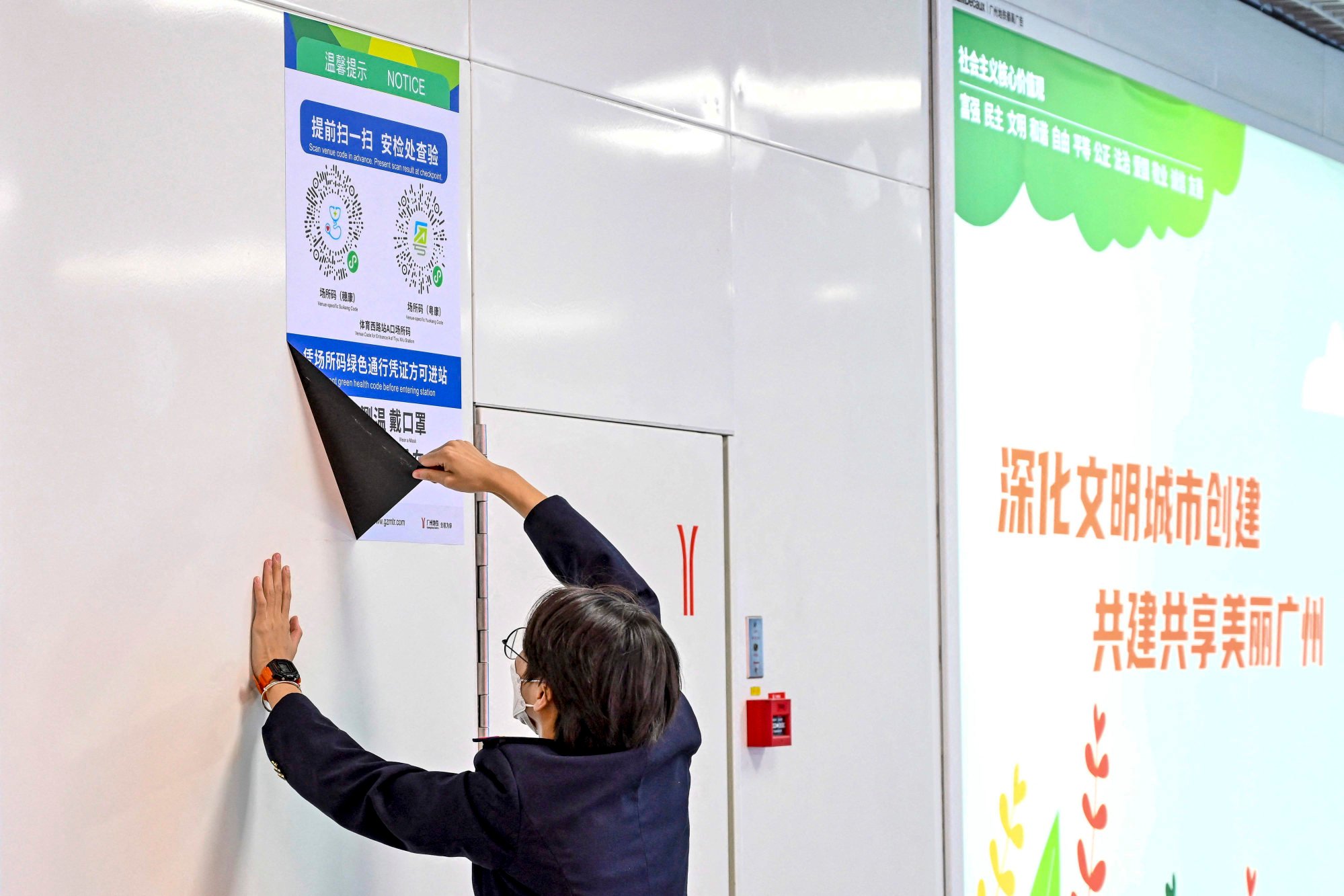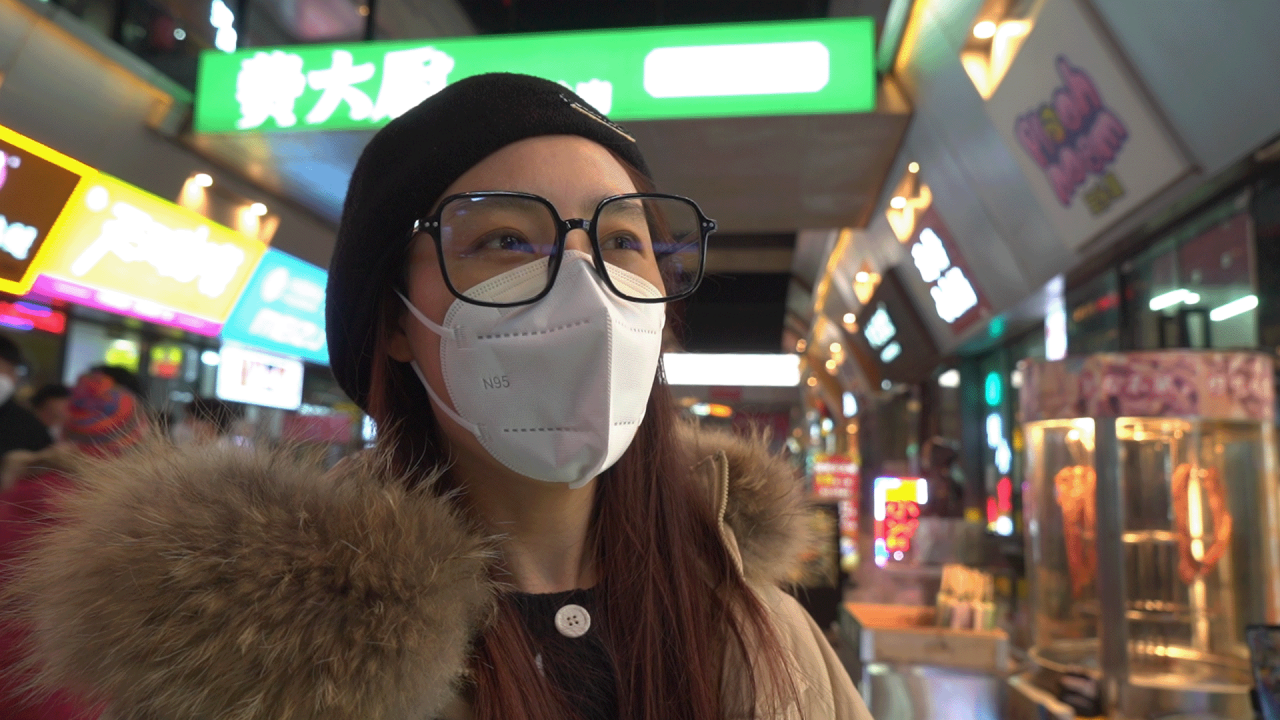
Lack of road map sparks confusion as Chinese cities navigate coronavirus U-turn
- Residents have complained on social media platforms about the chaos brought by sudden relaxation
- Public health experts call for transparent road map and better communication with public
Baoding, home to 10 million people, reported no cases on Friday, and identified no areas as being risky for infection.
“Many of my colleagues and relatives have been infected,” Chen said. “The numbers are uncertain, but at least one in each household. I’m really scared that I may get infected too.”
Many Baoding residents took to social media platforms to complain about the chaos brought by the sudden relaxation – including disruptions to everyday life, with shops closed, delivery services cut off, and insufficient supplies of drugs to fight the virus – and the topic began trending on Weibo, the Chinese mainland’s answer to Twitter, earlier this month, generating nearly 300 million views.
“I support a gradual reopening up and this is also a major trend, but the premise is that the government should roll out timely public health education and give sufficient preparation time,” Chen said. “The current policy comes as a surprise, and many residents can’t react accordingly.”
But following the easing-up messages from the central government, local authorities have been taking different and sometimes conflicting approaches, resulting in inconsistency and rapid changes during decision-making and execution. Public fear and confusion have mounted, with protests in several cities.
Beijing permits German residents in China to use BioNTech’s mRNA vaccine
Their paths to reopening have been winding, but public health experts, drawing lessons from their responses, have urged China to establish a more transparent communication mechanism and provide the public with a clear road map for an exit strategy.
“Many countries, in moving away from zero-Covid, including Singapore and Australia, had a road map that highlighted transparency and the need to communicate with the public,” said Yanzhong Huang, a senior fellow for global health at the Council on Foreign Relations, a think tank based in the United States.
“The recent turmoil and protests suggest China could have done a better job in risk communication and channelling people’s demands into the policy process. A clear, credible and coherent road map is the key to successful transition.”
He said the Singaporean and Australian governments had made it clear that policy relaxation hinged on progress in vaccination.
Its speedy opening up now, when only about 40 per cent of people aged 80 years or older – those most vulnerable – had received a booster dose by last month, sparked expressions of concern among public health experts.

“It is important that the government let the people know what challenges could lie ahead and sought people’s cooperation in the transition,” Huang said.
Public health experts said that to gain people’s trust and win their support, governments needed to acknowledge their concerns, manage their expectations to avoid panic and provide a clear road map ahead.
Catherine Bennett, an epidemiologist at Deakin University in Melbourne, said some people in Australia had been scared by the early messaging, and that had continued “with some commentators focusing on the risks rather than the risk mitigation strategies”.
Most importantly, Bennett said, such communication should focus on telling people what they could do to keep themselves and others safe – such as isolating if they were unwell, maintaining social distancing and wearing masks indoors – which would give them some control as the transitions started and help alleviate some of the fear.
In China, state media kept stressing the lethal nature of the virus and the harmful effects of long Covid, before a slew of articles in recent weeks that described what it was like to have Covid-19, in a bid to reverse the previous narrative and soothe public panic.
Hong Kong has ‘good chance’ of quarantine-free travel to mainland starting soon
Social media helped fill in some information gaps and several Baoding residents who contracted the virus in late November said they had shared their experiences with family members and friends to help them prepare mentally.
“Evidence from psychology tells us that having a plan typically decreases anxiety and provides structure for the actions required in the immediate and medium term and can provide some stability in uncertain times,” said Alexandra Martiniuk, an epidemiologist at the University of Sydney’s school of public health.
“A road map can be useful, with clear information about the decision-making process which underpins it and the data to inform the moves to the next steps.”
One resident said she had stockpiled 5kg (11lbs) of potatoes and bought a lot of meat and vegetables a day before the relaxation, thinking her residential compound would soon be sealed off.
“I was so scared because there were so many infections,” she said. “And I don’t know why the government suddenly made a U-turn.”
For effective communication, experts say having a consistent, single authoritative source of information is the first and foremost step, especially when public health orders change swiftly and people need to update their understanding of the rules.
‘Not an easy job’: China premier promises steady economic growth despite Covid
“Communicate regularly, transparently and with the same key spokespersons to build trust and help citizens come to terms with a complex and constantly evolving situation,” said Dr Jeremy Lim, from the Saw Swee Hock School of Public Health at the National University of Singapore.
“The prime minister himself personally addressed the nation before major policy shifts, e.g. lockdown, shift from zero-Covid, elimination to suppression strategy, to ‘living with Covid’,” Lim said.
Dr Paul Tambyah, president of the Asia-Pacific Society of Clinical Microbiology and Infection, said that in New Zealand, a politician, Prime Minister Jacinda Ardern, had been the “face” of the Covid-19 response, whereas in Malaysia, a medical professional – director general of health Dr Noor Hisham Abdullah – had been the main communicator.

Experts said media platforms that allowed two-way communication were also important and healthy debate that featured multiple perspectives was of great help.
Tambyah said social media allowed governments to gauge public sentiment and calibrate responses accordingly.
Martiniuk said that in Australia, where Covid policies changed multiple times, the majority generally supported the changes but there had been plenty of concerns expressed in such debates.
Claire Hooker, a senior lecturer in health and medical humanities at the University of Sydney, said providing people with information about “the messiness of decision making” actually made them more likely to support the government.
Singapore, for example, warned about possible surges in cases and the potential need to retighten Covid control measures as different variants of the virus emerged.
‘No need to panic’: Chinese city pushes ‘flu-like’ Covid message as curbs eased
Lim said governments should acknowledge the uncertainties, even among experts, and be candid about errors of judgment.
“The [Singapore] government encouraged academics and public health leaders to share their views openly and this was helpful in showing the alignment of government policy decisions with expert thinking, as well as the differences of opinions at the margins,” he said.
Singapore did not block any websites and when incorrect posts gained traction, experts were quickly mobilised to offer their views and mitigate vaccine hesitancy, Lim added.
Countries should also be more open and transparent about pandemic-related data, public health experts said.
In late November, a social media post that went viral on China’s WeChat social messaging app asked whether the health commission’s main job was just to tally Covid-19 cases, if any such virus had ever been eradicated, and questioned the opaque release of data and whether there was any scientific basis for China’s zero-Covid policy.
On the National Health Commission’s website, the number of vaccinations in China is updated every day, but there is no breakdown of the data in terms of age groups or vaccination rates for different boosters. On Friday, the overall doses reached 3.44 billion and China reported 16,592 new infections.
The latest detailed figures, revealed at a news conference last month, said only 68.7 per cent of people over 60 years old in mainland China had received three doses of a Covid-19 vaccine, with that figure falling to just 40.4 per cent for those aged 80 and over.
“Every society needs to be more open and transparent about data,” Tambyah said. “This is one area where Singapore has done relatively well with daily updates and regular publication of case data including vaccination status.”



